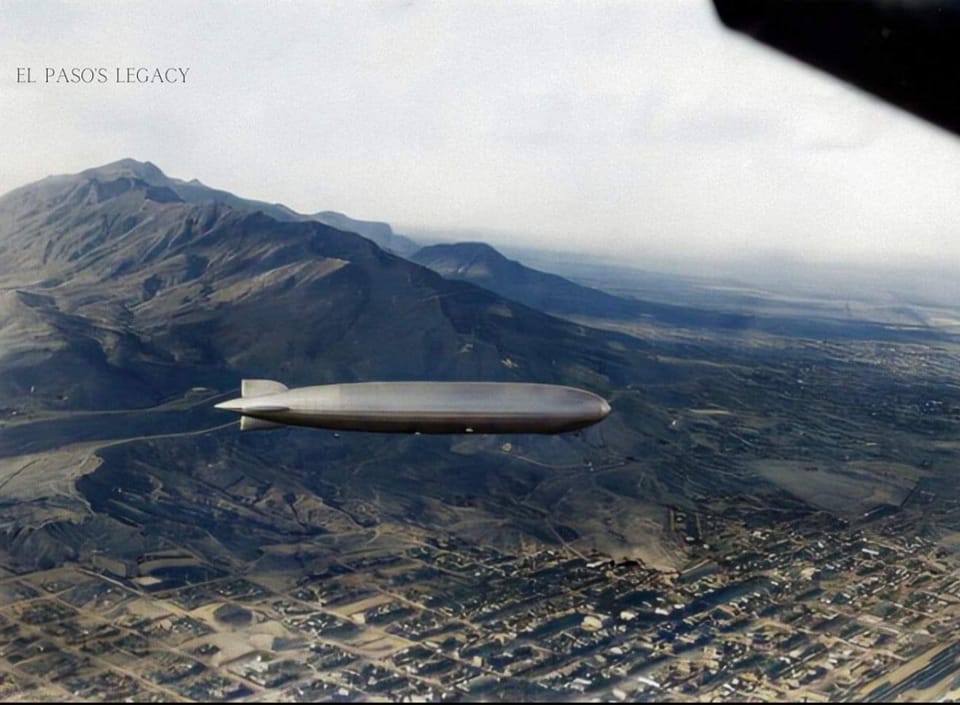triplets_93
Well-Known Member
- Messages
- 5,139
- Reaction score
- 5,845

Graf Zeppelin LZ 127 Round-the-world flight over El Paso 1929
After five days in Tokyo, at a former German airship shed that had been removed from Jüterbog and rebuilt at Kasumigaura Naval Air Station,[38][59] Graf Zeppelin continued across the Pacific to California. Eckener used the remnants of a typhoon to advantage, picking up a tailwind to boost ground speed.[60][57] He delayed crossing the coast at San Francisco's Golden Gate so as to come in near sunset for aesthetic effect.[61][62] The ship passed over Hearst's San Simeon residence during the night,[63] and landed at Mines Field in Los Angeles, completing the first ever nonstop flight across the Pacific Ocean; 9,634 km (5,986 mi; 5,202 nmi) in 79 hours and 54 minutes.[64][65]
The takeoff from Los Angeles was difficult because of high temperatures and an inversion layer. To lighten the ship, six crew were sent on to Lakehurst by aeroplane, and the minimum of fuel, food and spares were carried.[66] The airship made a dynamic take-off with full power on four engines; it suffered minor damage from a tail strike and barely cleared electricity cables at the edge of the field.[10][67] The 4,822 km (2,996 mi; 2,604 nmi), 51-hour-13-minute flight across the US took Graf Zeppelin over 13 states and El Paso, Kansas City, Chicago, Cleveland, and Detroit, before arriving back at Lakehurst from the west on the morning of 29 August, three weeks after it had departed to the east.
https://en.wikipedia.org/wiki/LZ_127_Graf_Zeppelin_operational_history
